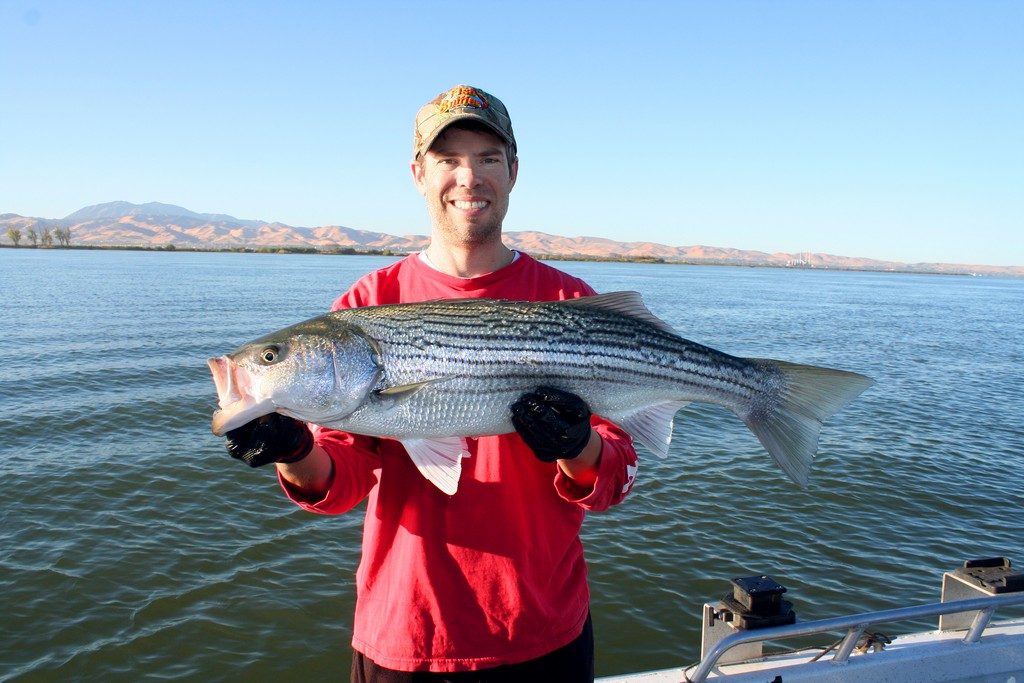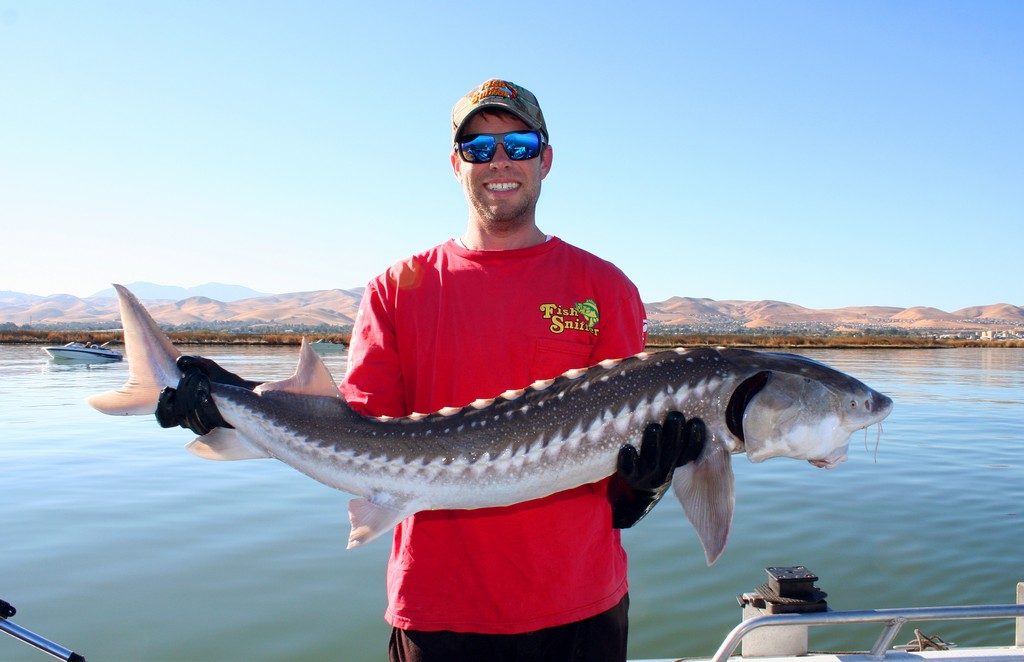By Jack Naves
I looked up to check my striper rod, but it stood frozen against the clear blue sky. I spooned a mess of cured salmon eggs onto a square of netting. As I attempted to form a salmon roe ball for sturgeon bait, I glanced up again to check my rod tip. It was no longer in the sky. Instead, it was pegged almost to the surface of the water, pumping wildly.
I recklessly dropped the partially formed roe ball and grabbed a towel to clean my hands. I fumbled the rod out of the holder and uttered, “It’s on” to my fishing partner Kirby.

This scene took place on November 7 during the striper portion of a trip to the West Delta. You see, I was trying to tie up roe balls so we could go fish for sturgeon, but the stripers wouldn’t give me a break. I can honestly say I have never seen a striper feeding frenzy like the one we had going on that day.
The trip started at the Brannon Island boat ramp at dawn. Kirby Desha and I launched the boat raced downstream to fish the area of the Sacramento River between Decker Island and Pittsburg. We set anchor in about 26 feet of water and got the rods all set.
The outgoing tide had water speeding past the boat. It was generated by the big gravitational pull of new moon period tides. We started soaking chicken livers wrapped with Miracle Thread on 8/0 circle hooks. The plan was to striper fish until the tide slowed, and then flip over to sturgeon fishing until the incoming tide picked up.
The bites were sparse at first, with only a few small stripers stealing our baits. In the first hour, we had one small keeper and lost another, but mostly had bait stealers grabbing our baits as fast as we could rig them up.
After an hour or so, the bigger fish started to move in. I saw my noodle rod pump a few times and then stop. I moved into position by steadying the rod with one hand and grabbing the reel handle with the other hand. The rod pumped again, and after about five seconds of movement, I slowly reeled in some line.

Suddenly, the rod slammed to the water, but I kept reeling with the rod still in the holder. Once I was sure the circle hook was pinned in the corner of the fish’s mouth, I pulled the rod out of the holder and the fight was on.
This fish was clearly bigger than the others I had hooked earlier in the morning. It peeled line off the reel several times before I got it to the side of the boat. Kirby netted the fish, and I got a quick weight and some photos before releasing it back into the ripping ebb current. The fish came in at just over ten pounds on my Boga Grip, and it marked the beginning of the great feeding frenzy of 2018.
For the next hour, we couldn’t bait our hooks fast enough. We lost count, but estimated that we landed between 15 and 20 keeper stripers. As the current began to fade, I tried to prepare sturgeon baits, but it was no use. I finally just reeled in my striper rods to get some roe balls tied up. It was time to go try for sturgeon.
We moved downstream to deeper water looking for sturgeon on the sonar unit. I wasn’t seeing much, but below the Pittsburg power plant, I saw 4 or 5 good marks on the screen. We set anchor downstream from the fish in 56 feet of water. The current was really starting to slow down at the end of the outgoing tide. Since I only had a few extra roe balls tied up, I started making more once I had my rods cast out.
About two minutes into the soak, I was tying my second roe ball. I peeked at my sturgeon rod out of the corner of my eye and saw movement. The tip was pumping up and down about four inches at a time. The scene was played out one again as I frantically dropped the partially formed roe ball and reached for my reel handle. With sturgeon, I use standard J hooks instead of circle hooks, so I reel as fast as possible to set the hook.
I reeled like crazy for about seven seconds but didn’t feel any resistance. I stopped, and the rod tip started shaking. “He’s still there”, Kirby related, and I started reeling again. Finally, the rod loaded up and the battle was on. It was five minutes or longer before I had the fish to the boat side. After a quick measurement and release, the sturgeon was back in the water. Although the fish was a 44-inch keeper, I decided to release it.

We saw two other sturgeon caught by nearby boats, including one by the boat Captained by David Hammond of Delta Pro Fishing. After the current flipped directions and the incoming tide picked up, we moved back to our striper spot. Although the bite wasn’t on fire, we still were able to land several more keepers to 7 pounds before stopping for the day at 12:30 pm.
If you enjoy fishing for striped bass or sturgeon, now is the time to go. The stretch of the West Delta between Decker Island and Pittsburg is loaded with fish. The bite will remain good until the water temperatures dip below the 56-degree mark. Get into the action before it’s too late!
